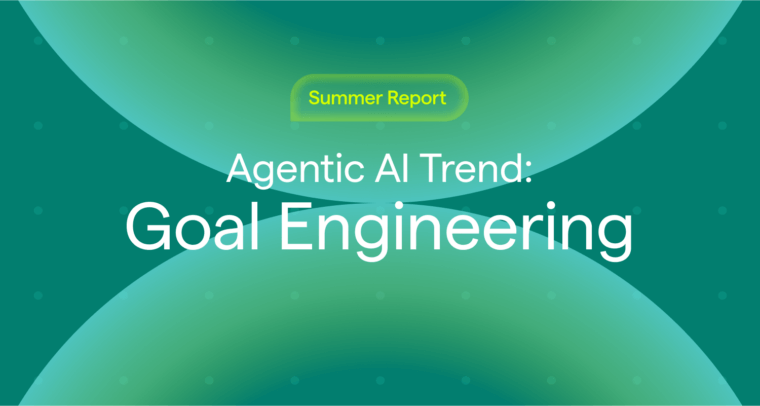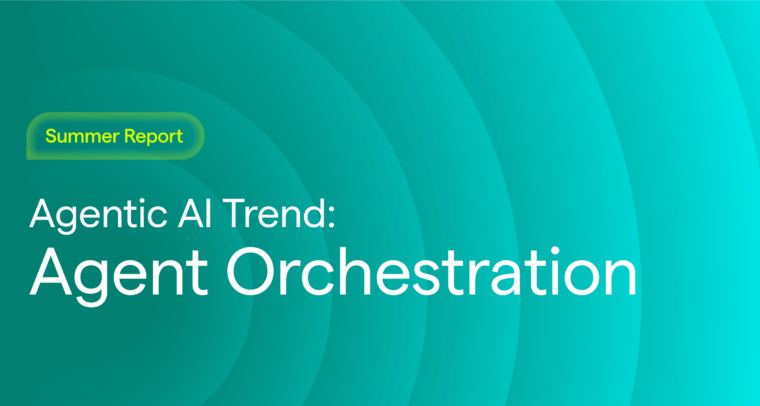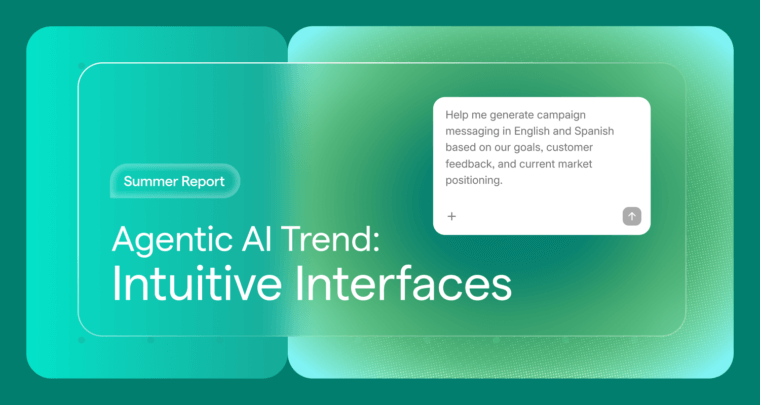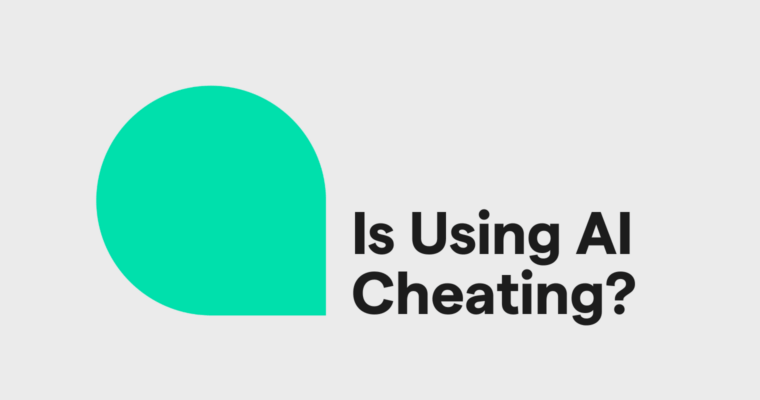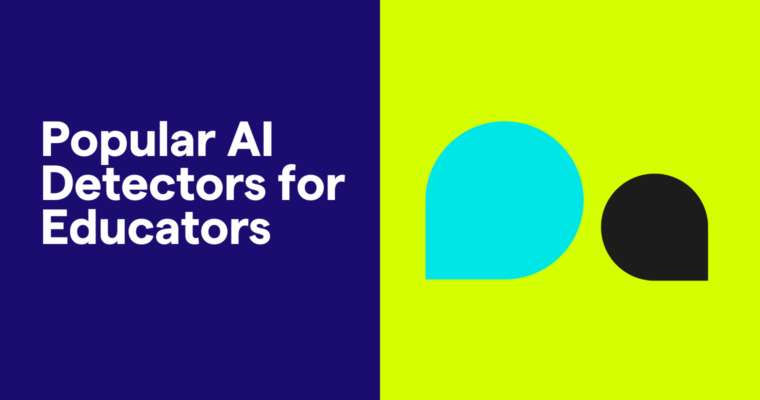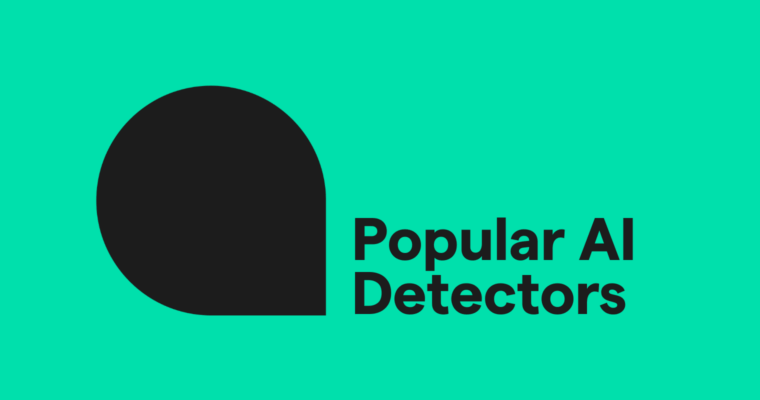
As AI-generated content floods classrooms, workplaces, and every corner of the internet, people are turning to AI detectors to determine what was written by a human and what was generated by a computer.
From quick online checkers to advanced enterprise tools, today’s AI detectors promise to automatically flag machine-written content. But how reliable are AI detectors, really? The truth is no tool is perfect, and understanding how AI detectors work (and where they fall short) is important for establishing fair content processes in academic and professional settings.
In this guide, we cover how to evaluate AI detectors and share the top AI detection tools of 2025 so you can develop content authenticity practices for the AI era.
How to compare AI detectors
AI detectors vary widely, not just in what they flag but also in how they present their findings. Here are the key features and functions to keep in mind when evaluating which AI detector best fits your needs:
- Detection format: Does the tool give a single overall score, or does it break things down sentence by sentence? Granular output can offer more actionable insight.
- Visual indicators: Some tools use color-coding or labels to show which parts of the content are likely AI-generated, which can be helpful for scanning the document quickly or presenting results.
- Input flexibility: Can you paste in short snippets, upload full documents, or scan live URLs? Think about your workflow and content types when picking a tool.
- Language support: Not all detectors work equally well across different languages. If you’re working internationally, check for multilingual compatibility.
- Additional features: AI detection, on its own, is often not sufficient in most professional or academic settings. Some tools offer plagiarism detection, citation support, or authorship tracking, which make for a more holistic solution.
Top 7 AI detectors in 2025
Now that you know what to look for, let’s take a closer look at how today’s top AI detectors stack up. Each of the tools below offers a different combination of features, interfaces, and focus areas, so the best fit depends on your specific needs.
1 Grammarly
Grammarly’s AI detector is built for students, educators, professionals, and teams who want more than just a yes-or-no answer. It doesn’t just tell you if AI was used but helps you understand how a piece of writing came together. That includes whether the text was typed manually, pasted in from another source, generated with AI, or refined using Grammarly’s suggestions. This layered insight provides a fuller picture of the content creation process.
How it works
Unlike tools that require you to copy and paste content into a separate platform, Grammarly seamlessly integrates AI detection into your writing workflows. You can run a scan directly within Grammarly, Google Docs, or Microsoft Word—without switching tabs. Detection is currently available for English content only.
Grammarly’s free, in-browser AI detector can analyze up to 10,000 characters at once to estimate how likely they are AI-generated. Upgrading to a Pro plan unlocks more detailed insights for a comprehensive view of your writing process, along with the following additional features that support responsible AI usage.
- Grammarly Authorship shows how a document was created. Once a writer turns on Authorship, Grammarly tracks if the text was typed by a human, pasted from a source, generated with AI, or edited with Grammarly. Writers can automatically generate a report to share with their readers in order to foster transparency or prove their originality.
- Citation features help you clearly attribute AI assistance, in addition to other more traditional sources.
- Plagiarism detection checks for original writing against billions of web pages and academic sources, so writers can pinpoint text that may need rewriting and proper attribution.
- Grammarly’s AI humanizer tool can help polish AI-generated text—enhancing clarity, tone, and flow to create writing that feels natural, relatable, and engaging to your readers.
See Grammarly Authorship in action:
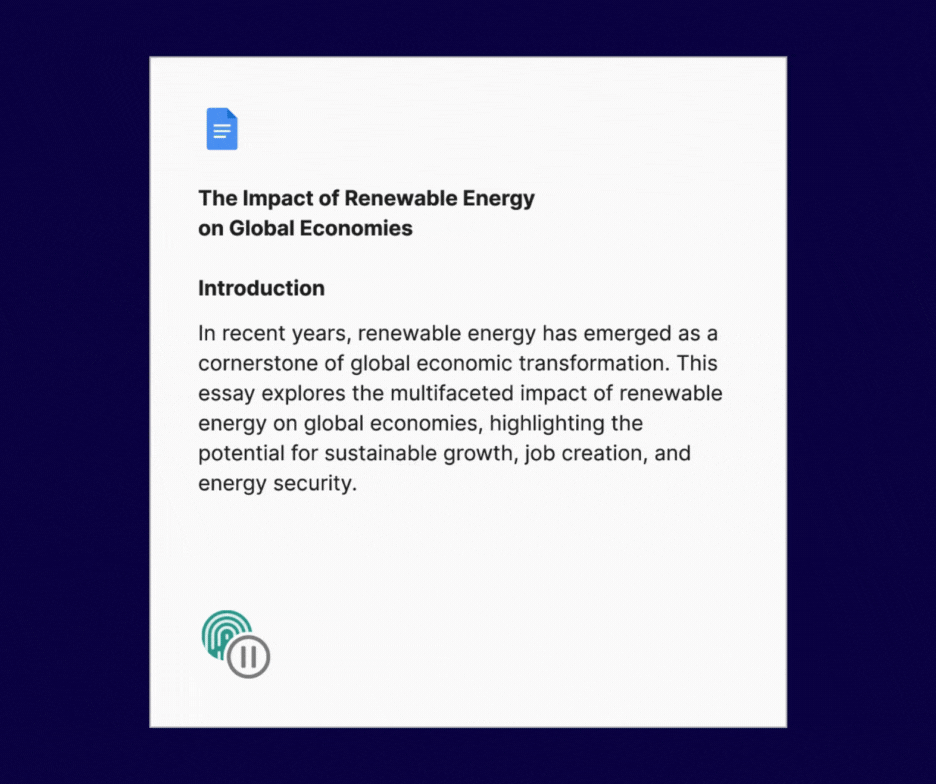
AI detector features:
- Percentage-based AI detection score
- Sentence-level AI probability analysis
- Works in Grammarly, Google Docs, Word, and more
- Developed for English writing
- Free version for quick scans; Pro includes Authorship, citation, and plagiarism detection tools
2 GPTZero
Though initially developed for educational purposes, GPTZero has evolved to serve a variety of customers and industries. Beyond assisting students and educators, it now caters to professionals, such as writers and recruiters, as well as the cybersecurity industry. Its AI detector estimates if text was written by a human, AI, or a mix of both. GPTZero offers free basic scans along with advanced paid features.
How it works
Users can paste text or upload documents for analysis using GPTZero’s online tool. The tool returns an overall score, along with sentence-level highlights showing where AI is suspected.
The free version provides a basic overview for up to 5,000 characters. Advanced scans, available with a premium plan, offer deeper breakdowns and support more file types and languages.
Here’s what GPTZero’s AI detector looks like in action:
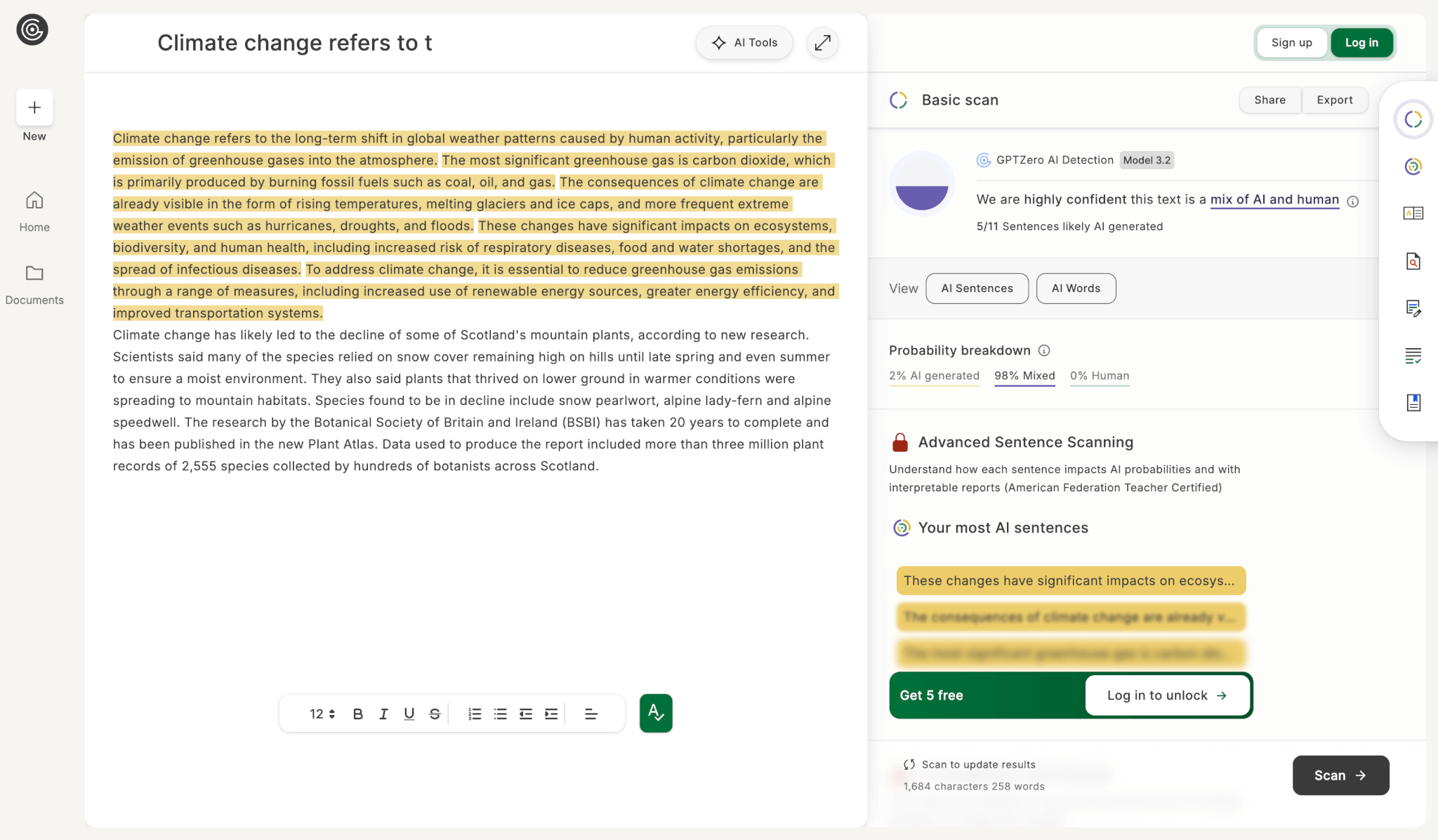
AI detector features:
- Basic scans for overviews and advanced scans for more detailed analysis
- Sentence-level AI probability scores, highlighting likely “AI sentences” and “AI words”
- Support for multiple languages, including English, French, and Spanish
- File upload support for PDF, DOCX, and TXT files
3 Originality AI
Originality AI is designed for web publishers, content marketers, and writers who want to verify whether a human or AI wrote content. It’s also useful in educational settings and other contexts where content authenticity matters.
How it works
Users can paste up to 750 words directly into the free checker, available online in most browsers. With a premium plan, you can also upload documents, scan live web pages via URL, and access multilingual support.
The tool uses a color-coded scale to highlight AI-generated content—green for likely human-written, red for likely AI—making it easy to assess results visually. It also offers example outputs from AI models, like ChatGPT and Claude, alongside human writing to help users better understand what AI-generated content looks like.
Here’s what Originality AI’s AI detector looks like in action:

AI detector features:
- Free basic scans (up to 750 words)
- File uploads and URL scans with a premium plan
- Color-coded highlights (green = original; red = AI-generated)
- Sample outputs from ChatGPT, Claude, and human writers for comparison
4 QuillBot
QuillBot’s AI detector analyzes text to determine whether it was written by AI, a human, or a combination of both. Results are broken down into four categories—AI-generated, AI-generated and AI-refined, human-written and AI-refined, and fully human-written—making it easy to see the proportion of AI involvement in a piece of writing.
How it works
Users can paste text directly into the AI detector, which then provides a detailed breakdown of AI involvement. QuillBot supports multiple languages, including English, French, Spanish, German, and Dutch. No account is needed to run scans in the browser, and it offers free, unlimited checks. However, it currently offers only a basic breakdown without deeper explanation or flagged highlights.
Here’s what QuillBot’s AI detector looks like in action:
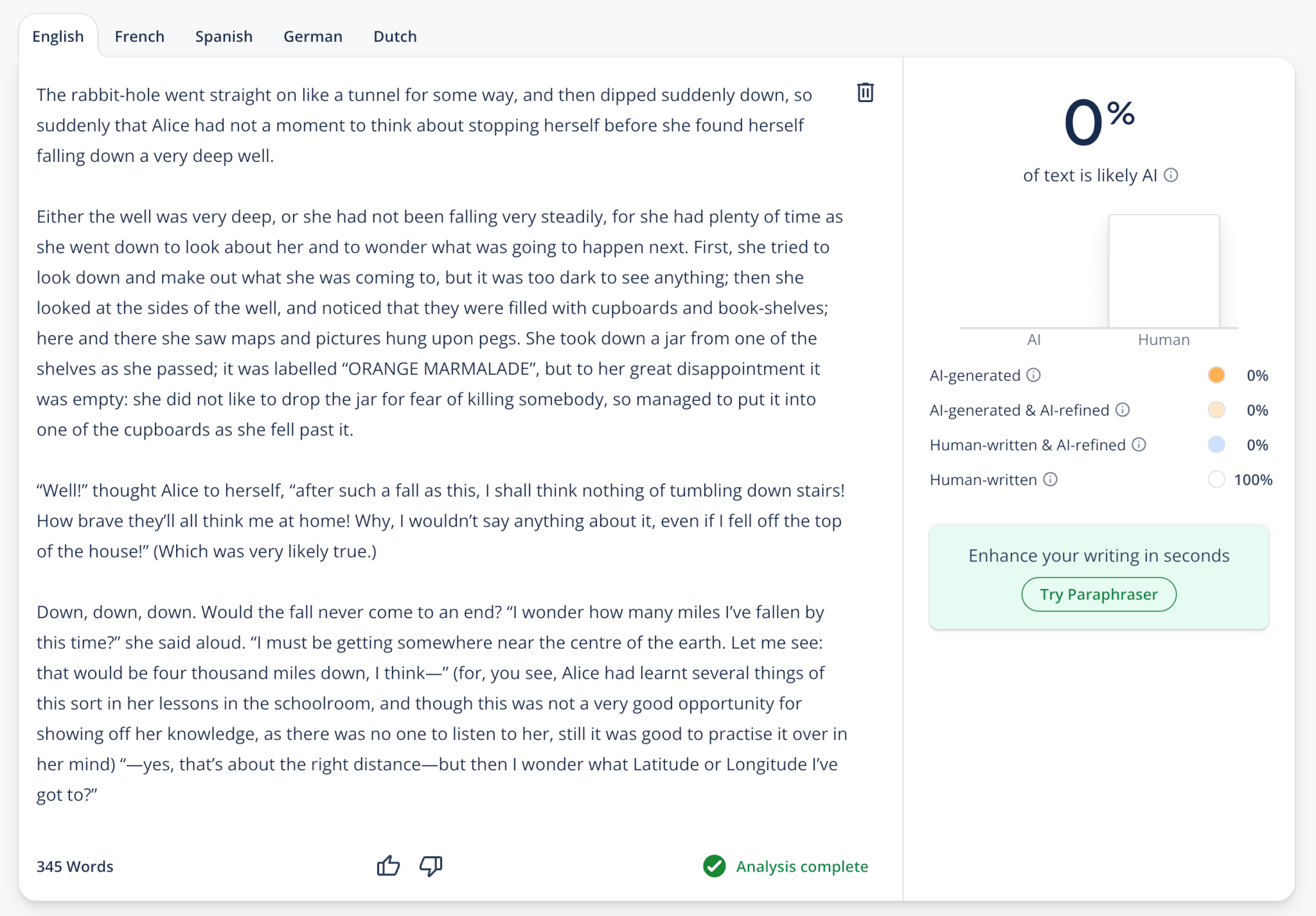
AI detector features:
- Percentage-based AI detection
- Classifies content into four categories
- Unlimited free scans
- Multilingual support: English, French, Spanish, German, and Dutch
5 Copyleaks
Copyleaks’s AI detector scans text and reports the percentage it believes is AI-generated, making it easy to get a quick, high-level assessment of content authenticity. It also offers “AI Insights” (short explanations for why specific sections were flagged), but you need to sign up for an account to get this level of granularity.
How it works
Without an account, users can only paste text manually in the browser. Those with an account can access file uploads, saved results, and advanced features. The tool supports more than 30 languages, including English, Spanish, French, Japanese, and Chinese.
Here’s what Copyleaks’ AI detector looks like in action:

AI detector features:
- Percentage-based AI detection
- AI insights are available with a free sign-up or a paid plan
- Supports 30-plus languages, including English, Spanish, French, Japanese, and Chinese
6 Winston AI
Winston AI is built for academia, enterprise teams, and publishers looking to detect AI-generated content, check for plagiarism, and improve overall content quality. The tool assigns a “Human Score” that reflects how likely the content was written by a person and a “Plagiarism Score” that highlights any duplicated material found in the text.
How it works
To try it, you must sign up for an account. Once logged in, you can paste or upload your text for analysis on Winston AI’s website. Winston AI also includes sample outputs from ChatGPT, Gemini, Claude, and human writers to demonstrate how it works.
The platform supports multiple languages, including English, French, Spanish, German, Portuguese, Dutch, and Chinese.
Here’s what Winston AI’s AI detector looks like in action:
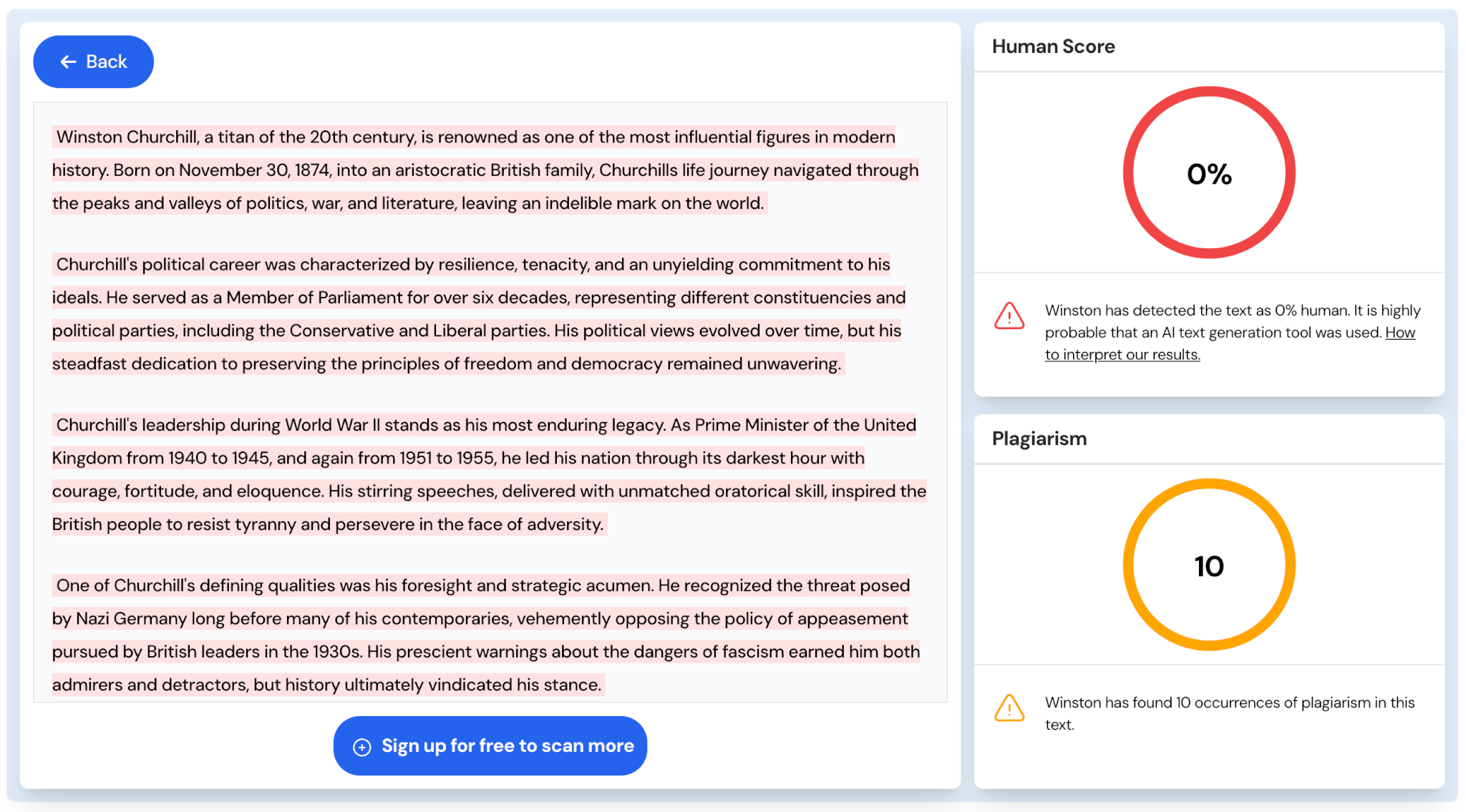
AI detector features:
- Human Score indicating the likelihood of human authorship
- File uploads (PDF, DOCX, and image formats)
- Plagiarism detection and multilingual support
7 ZeroGPT
ZeroGPT is built to detect AI-generated content from tools like ChatGPT and other GPT models. Users can analyze up to 15,000 characters at a time by pasting text or uploading documents in PDF, DOCX, or TXT formats.
How it works
The tool offers both basic and advanced scan options. Advanced scans, available with a premium plan, include sentence-level AI probability scores and highlights of AI-written sentences and words. ZeroGPT supports several languages, including English, French, and Spanish.
Here’s what ZeroGPT’s AI detector looks like in action:
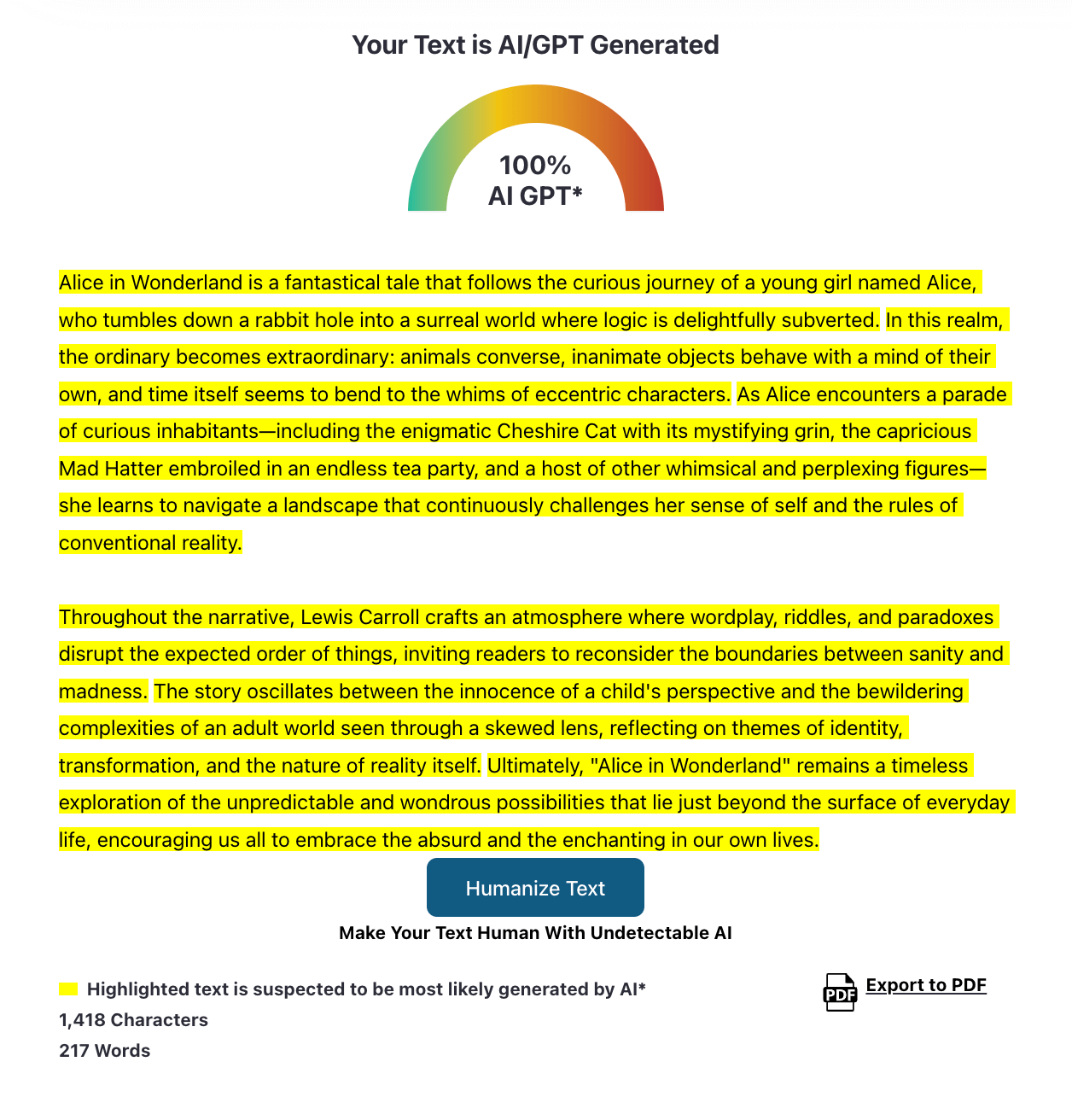
AI detector features:
- Basic and advanced scans are available
- Sentence-level AI probability (premium)
- Highlights AI-written sentences and words (premium)
- Supports file uploads (PDF, DOCX, and TXT)
- Multilingual support: English, French, and Spanish
Our recommendation: best AI detector
The “best” AI detector depends on your goals. Some tools focus on detailed analysis or multilingual support; others are built for speed or scale. But none can definitively prove authorship—and that’s where detection alone falls short.
Grammarly takes it a step further. In addition to AI detection, plagiarism checking, and citation support, it offers Grammarly Authorship, a feature that tracks how content was created—typed, pasted, generated with AI, or edited. This gives writers and reviewers a transparent view of the writing process, not just the end result.
As AI becomes a common part of writing, the real question isn’t whether AI was used but rather how. Tools that provide authorship insights help move the conversation from speculation to clarity and context.
In a world with increasingly common AI use, transparency isn’t optional—it’s essential.
*Based on product reviews conducted in April 2025.

